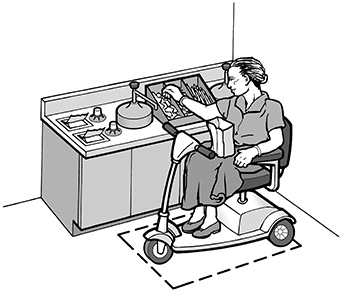



banner.jpg)


What is readily achievable is determined on a case-by-case basis, relative to a particular business's resources and existing barriers. Something readily achievable for one business may not be readily achievable for the one next door, because of more limited resources or more difficult physical constraints. And, what is readily achievable when a business is doing well may not be readily achievable in a down cycle when business is slow. A barrier that cannot be removed when business is slow should be reevaluated when business improves.
If a business has more barriers than it can afford to remove all at once, it can spread the work out over time. Removing barriers is an ongoing responsibility, so you should reevaluate the barriers in your facility every year to determine which ones to remove.
Priorities
In evaluating what barriers need to be removed, you should give first priority to getting customers with disabilities in the door. The second priority is providing access to the areas where you provide goods and services to the public. The third priority is providing access to the restroom facilities that are provided for customers' use. Lastly, you should eliminate any other physical barriers you have.
 |
 |
|
A woman using a wheelchair is buying a drink at a small grocery store. Adequate maneuvering space and a low, uncluttered counter make it possible for her to approach the sales counter. |
A woman using a scooter is selecting items from the condiment bar at a casual restaurant. Adequate maneuvering space and items placed within reach make it possible for her to serve herself. |
Limits
The ADA does have limits for barrier removal. While stores may need to rearrange racks and shelves, restaurants may need to rearrange tables, and other businesses may need to rearrange furniture or potted plants in order to permit wheelchair access, businesses are not expected to reduce the amount of furniture or display racks to the extent that it results in a significant loss of selling or serving space.
In removing barriers, you never have to do more than is required under the standards for alterations (as discussed in lesson 3).
|
|
|
|
|
|




